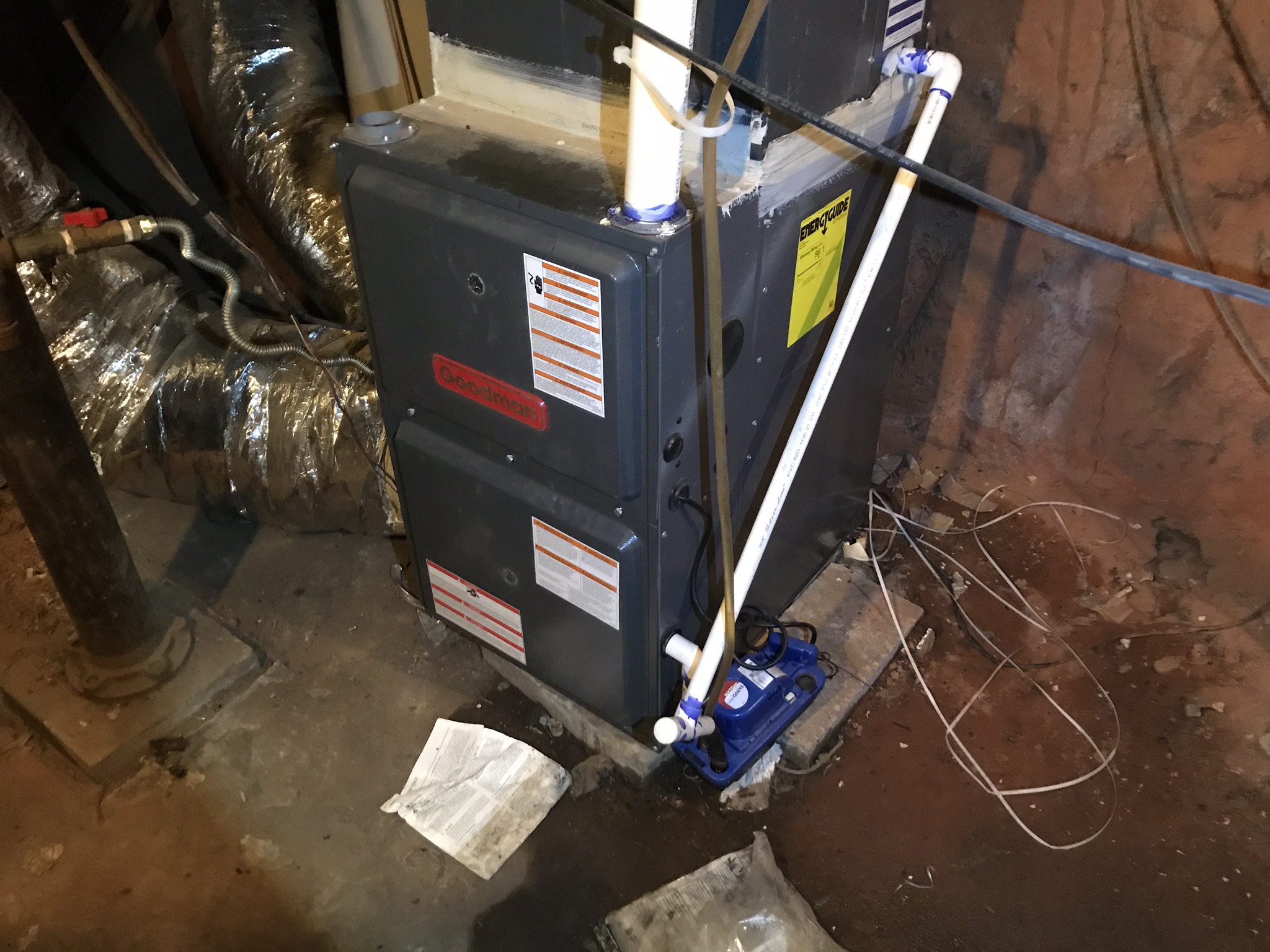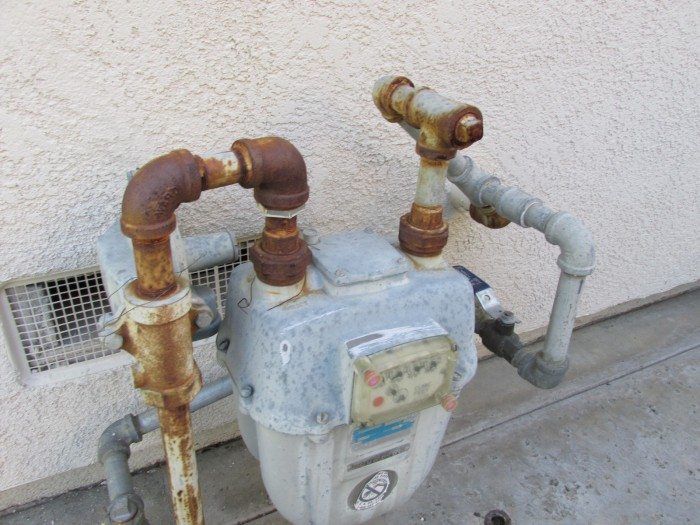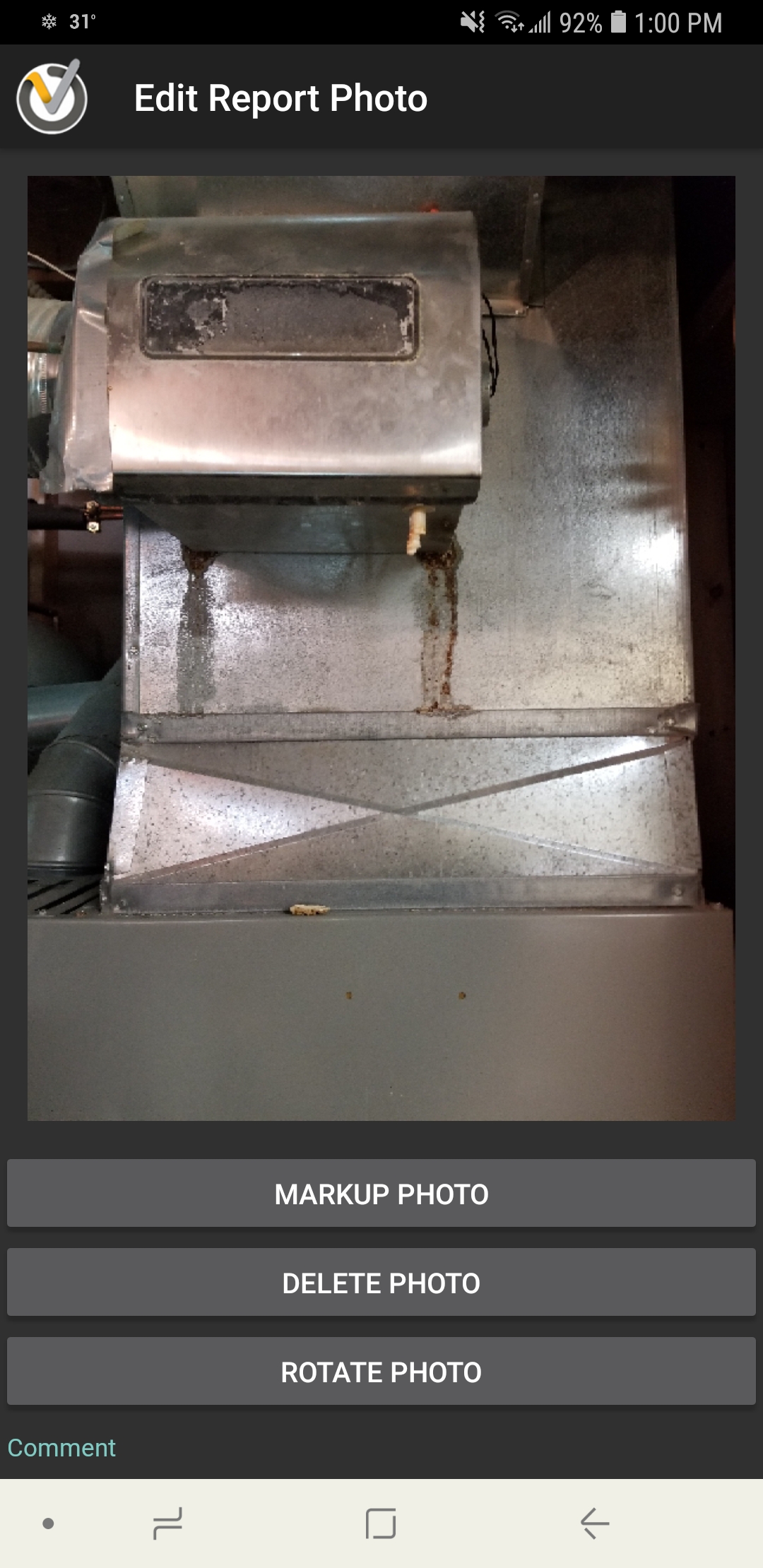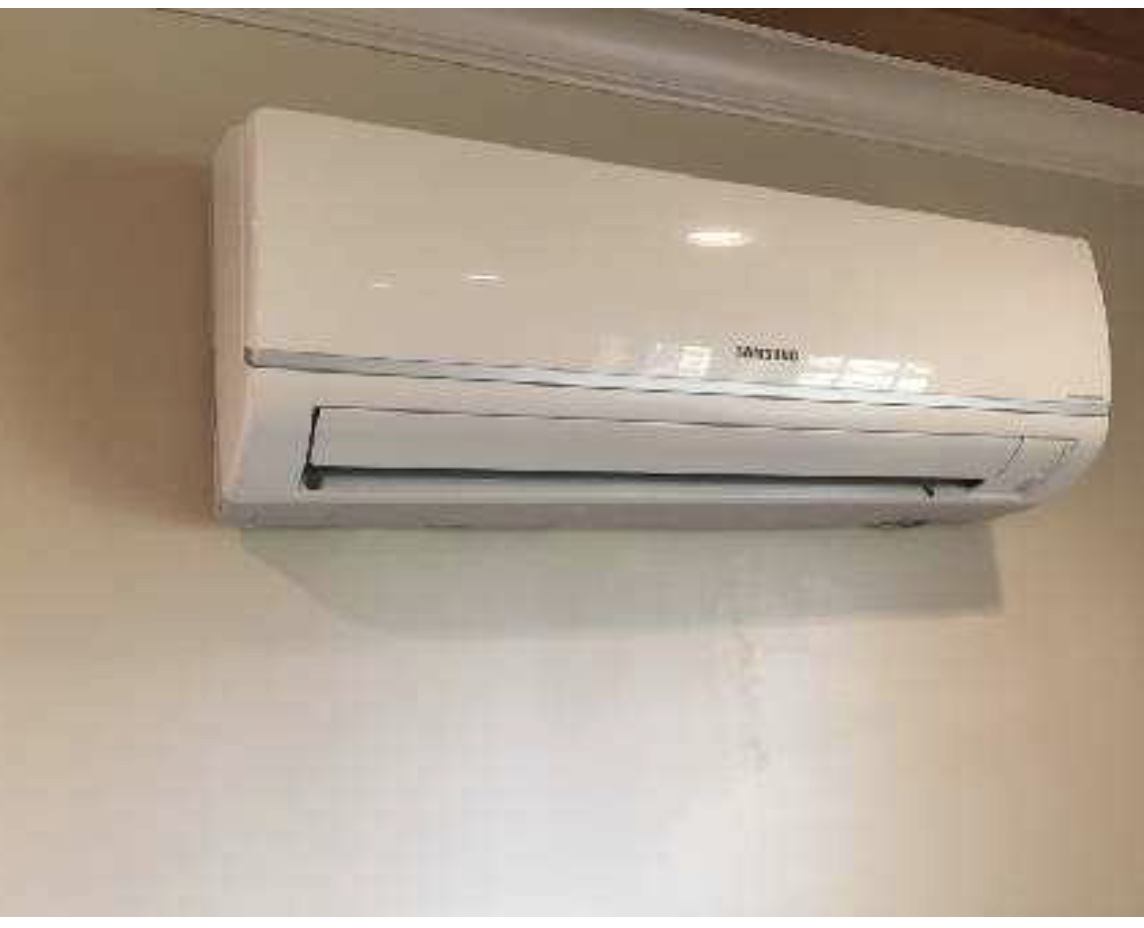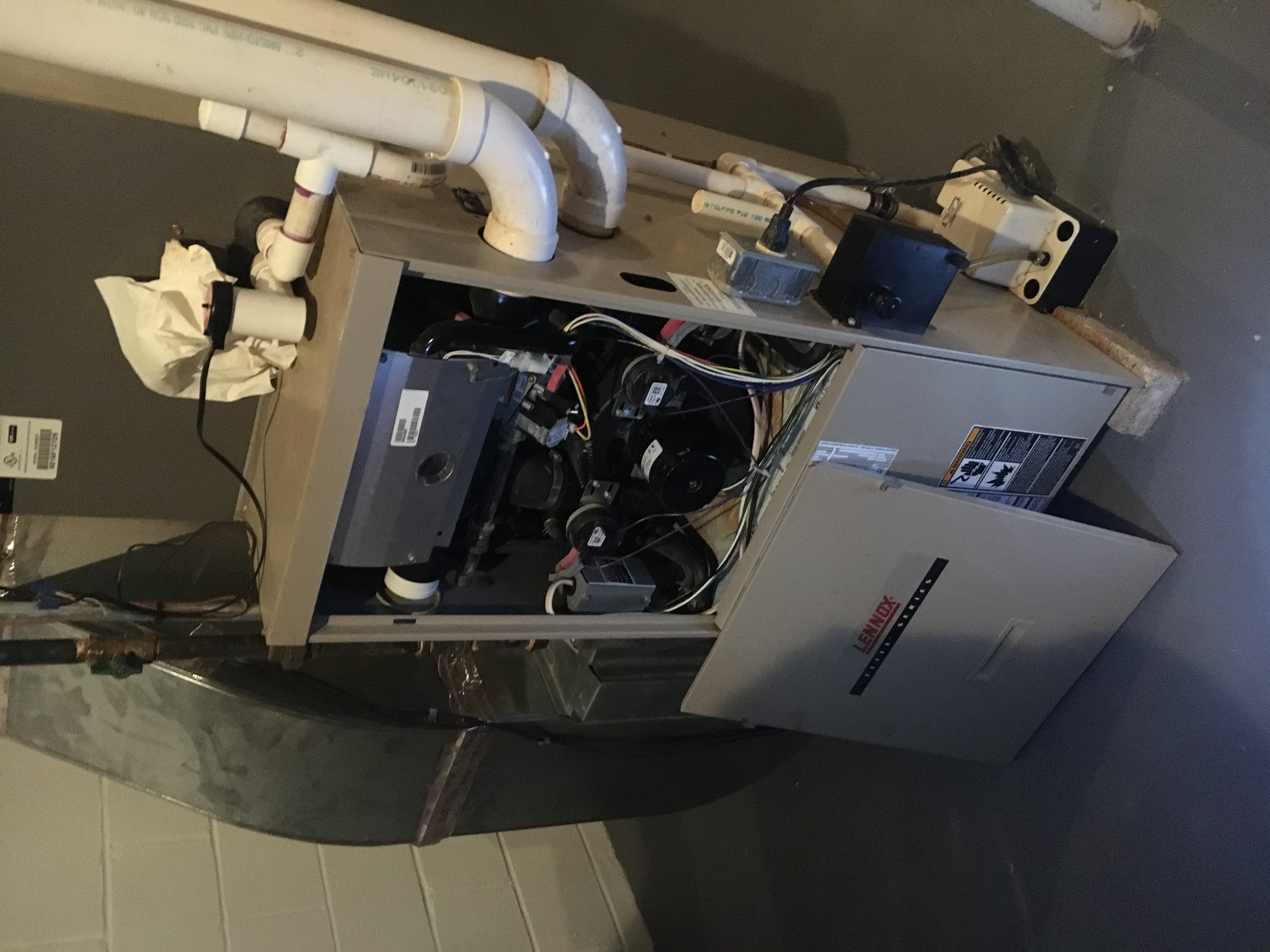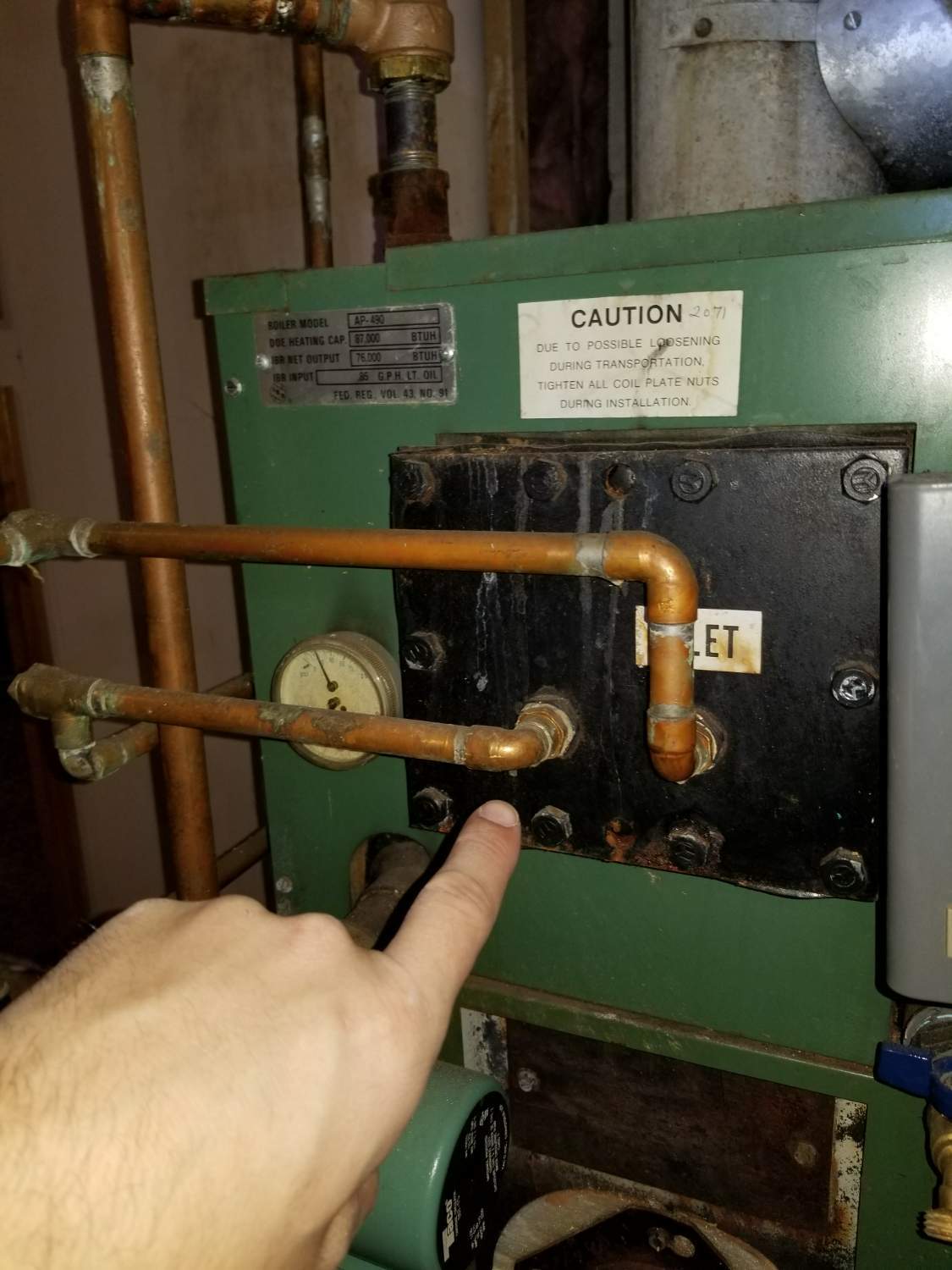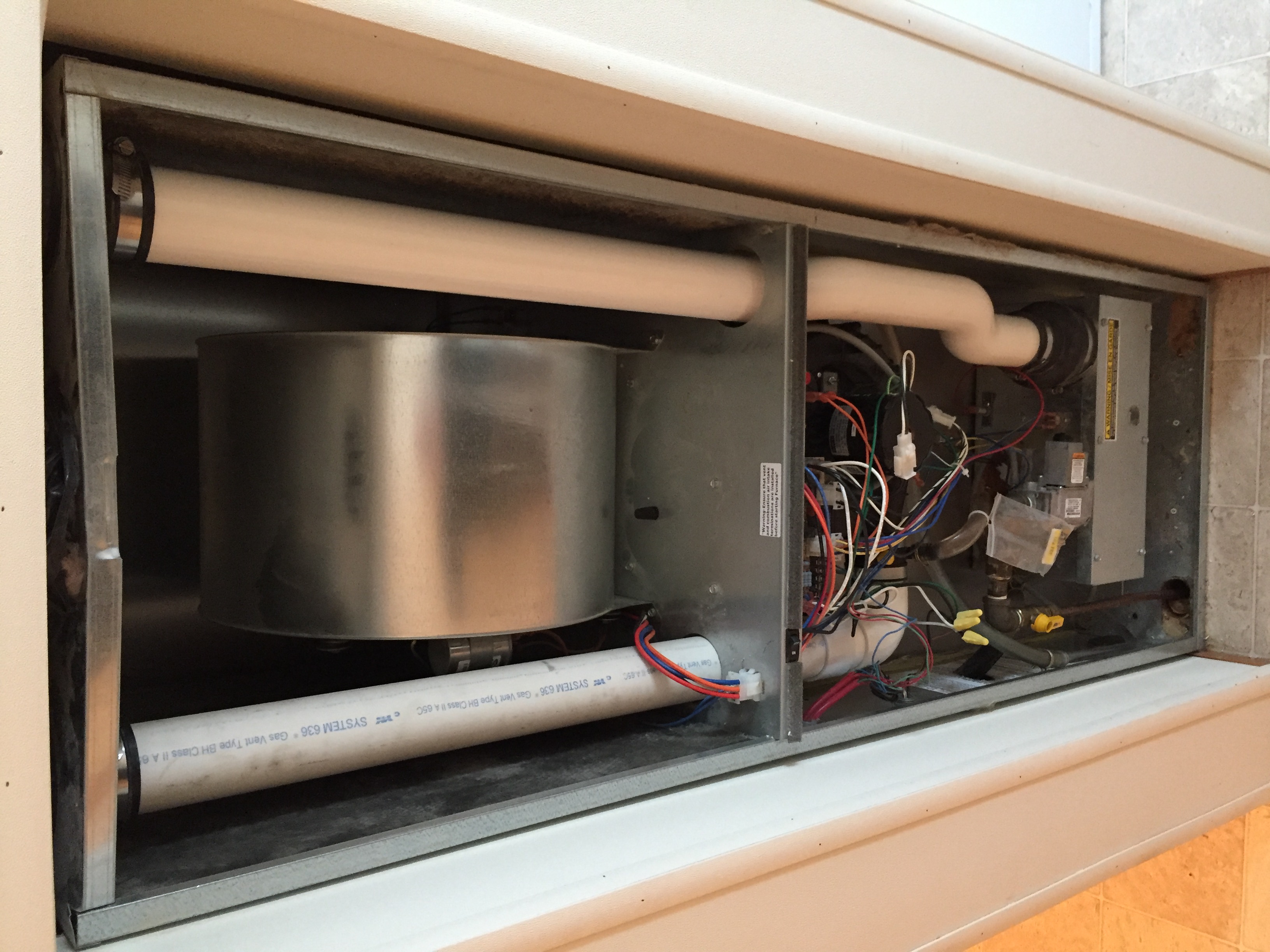I investigated ac systems and learned that there is a condensate line under the evaporator coil to allow water to drip away from the unit or to catch it. It appears to have it’s own trap to keep gases from forming or entering back into where the evaporator coil is located.
This is a picture of a high efficiency Goodman gas furnace. Since it is high efficiency, the venting pipe is able to be constructed of PVC material. As you can see at the bottom of the unit, the condensate pump is leaking water. Further evaluation and repair by a qualified HVAC professional is recommended.
There are many types of heating systems. They can be described in various ways, including the mediums they use to convey heat. For example, the medium could be air, steam, water or electricity. If the system is a high efficiency, gas fired furnace, the medium would be air.
Here you can see that the gas meter located outside the house has accumulated dust due to the meter being exposed to the weather, this is just a surface issue or cosmetic nothing about this would cause a major defect in the efficiency of the gas meter.
I choose a picture of how air flows through a heat exchanger. What I learned from the picture is that the blower fan on the bottom blows air up the unit the ribbon connectors then ignite the combustion gases as the air passes through a serpent-like piping heating it up before distributing the air around the house.
This is a picture of the humidifier attached to a conventional oil furnace. As you can see, there is noticeable rust on the duct where the humidifier is attached, indicating a leak in the unit. There was also a bucket on the floor to catch water dripping from the unit. Humidifiers tend to be neglected when it comes to home maintenance, and are therefore prone to failure.
I chose an image showing typical leakage points on an indoor oil storage tank. Oil furnaces are popular in rural areas where I work.
Typical places where you might find signs of oil leakage are where the vent and fill pipes connect to the tank, by the oil level gauge, and around the shut off valves and oil filter.
The unit in this picture is the evaportor of a mini split refrigeration system. These units work kind of like a window unit but are much more efficient. These units work very well for areas where there is no room for duct work to be run. The entire bottom floor of my house has these units and I would recommend them for anyone.
This essay is about the importance of changing the air filter in your HVAC unit. You filter should be checked monthly and most likely changed monthly. Some filters can be good for up to 3 months but it is still good practice to check them monthly.
A high efficiency Lennox HVAC system is evidenced by the PVC piping and the condenser pump on the floor. Because a second heat exchanger is used to further extract heat from the gases leaving the first heat exchanger, increasing the overall efficiency to greater than 88%.
An article entitled "Attic Pull-Down Ladders, by Nick Gromiko points out that these collapsible ladders used to access attics are often installed, not by carpenters, but by homeowners. Because of this, there are often any number of common problems, such as: modifying structural elements incorrectly to attach the ladder, using inappropriate fasteners, and employing inappropriate methods to insulate after installation. This article has made me aware that these ladders should always be thoroughly inspected to identify any number of potential safety issues.
The hot water for this house is coming off of the oil boiler in the basement. There is not a separate hot water heater for the house. The hot water is provided by a mixing valve on the heating system boiler.
I chose to read on Ant inspection. I found it incredibly helpful and learned proactive measures that can assist preventing ant infestation. Stacking wood away from the house, Storing food in sealed containers, and keeping vegetation from touching the side of the house are all ways to help keep ants out of your home.
The article I read was entitled “Increasing Home Energy efficiency”. There are many different areas in a home where energy efficiency can be increased. Some of those areas are but not limited to, the type of lightbulbs, windows and doors, heating and cooling systems, appliances, and quality of insulation. By increasing energy efficiency in the home, homeowners are able to save money on energy bills, increases indoor comfort, and reduce pollution.
The Photo i chose for this inspection assignment is a diagram of a residential HVAC system. This diagram shows how the central ac is usually placed on the side of the house with the forced air heating unit inside connected to the plenum and humidifier.

The article i chose for this inspection assignment is “Inspecting the HVAC System for Duct Leaks and Energy Loss”. This article explains how detrimental a leak in a duct can be to a homes hvac system. In addition to loss of comfort in the home the unit will loose efficiency.
This photo contains a furnace from a new mobile home. The furnace is an air forced system that has a propane gas fuel. It is a high efficiency furnace as seen by the white PVC pipes that supply the fresh air, and emit the exhaust. a high efficiency furnace such as this will have a high temperature glow stick that will ignite the supply gas instead of a standing pilot light that the older units used to have.
The report that I read was about Mudjacking. Mudjacking is a term used for a process that is able to lift concrete slabs that have sunk. Typically they have sunk because of deterioration of the substrate underneath either from erosion, or because the base was not properly compacted in the first place. As an inspector you can identify that a slab of concrete has been mudjacked because it will have spots of concrete that have a different make up and look from the original slab. These spots indicate where the holes were drilled to insert the slurry compound that fills the void underneath the concrete. Mudjacking is a good option for repairing sunken slabs because the cost is much less than slab replacement and it is environmentally friendly to use the slab for as long as possible.
Primary condensate drain lines are not insulated. This line will develop condensation and drip water if not properly insulated. Primary condensate drain line lacks the required T vent/clean up. A t is used to adding bleach or vinegar into the drain system to keeping the drain line from clogging.
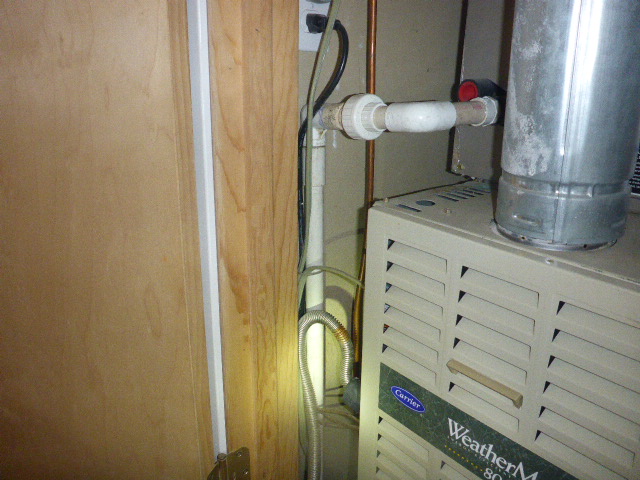
Carbon monoxide detectors recommendations in homes. When a residence has any of the following items or conditions, carbon monoxide detectors are recommended to reduce risk of elevated levels of carbon monoxide in the home (I.e. attached garage, fireplace, gas appliances).
